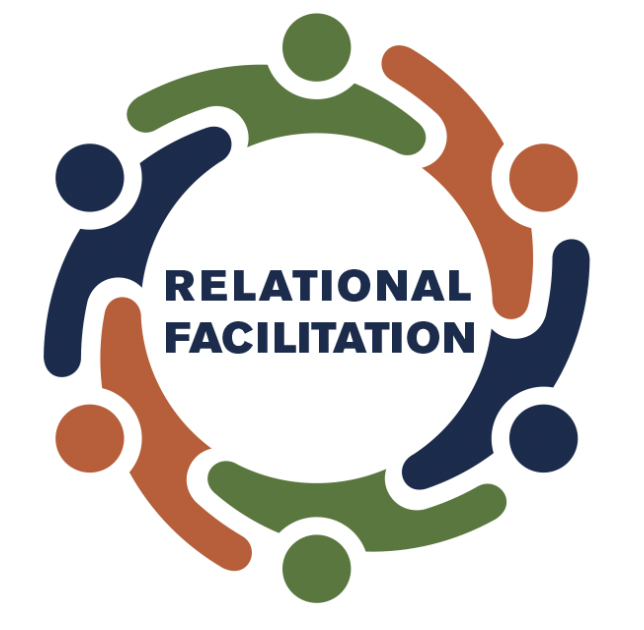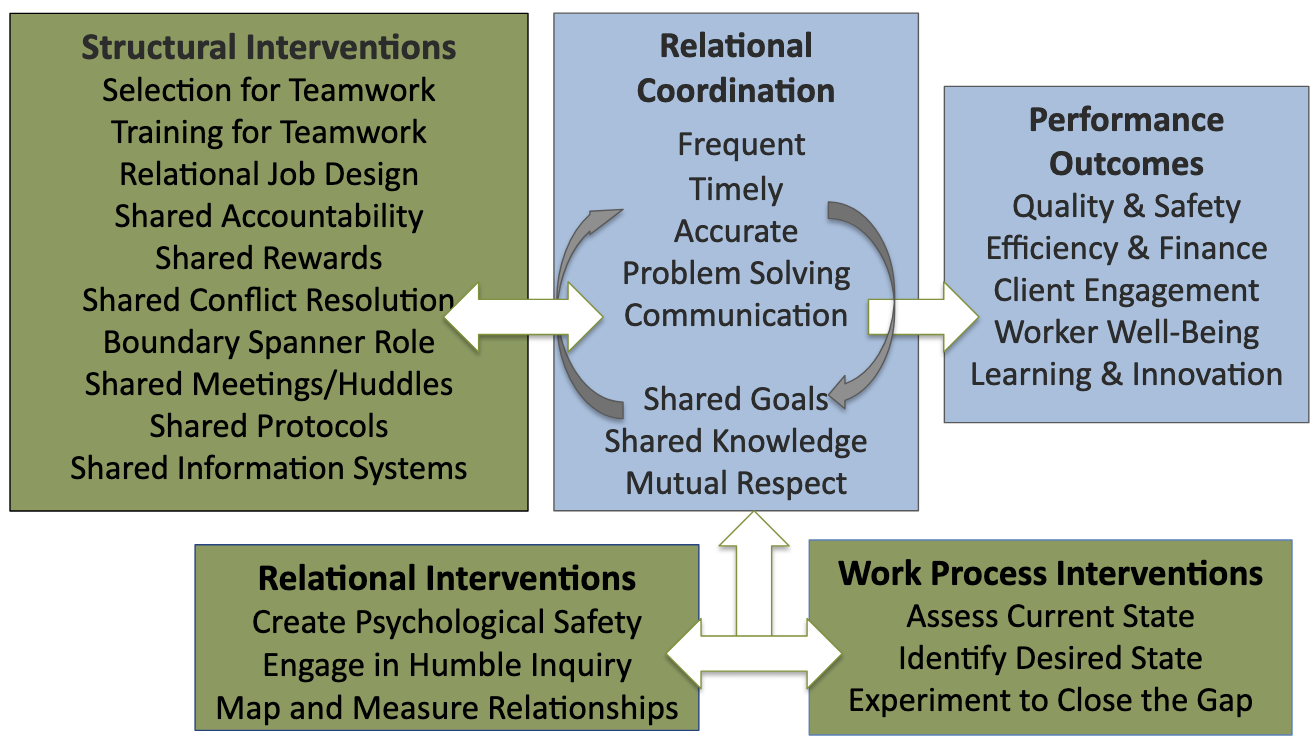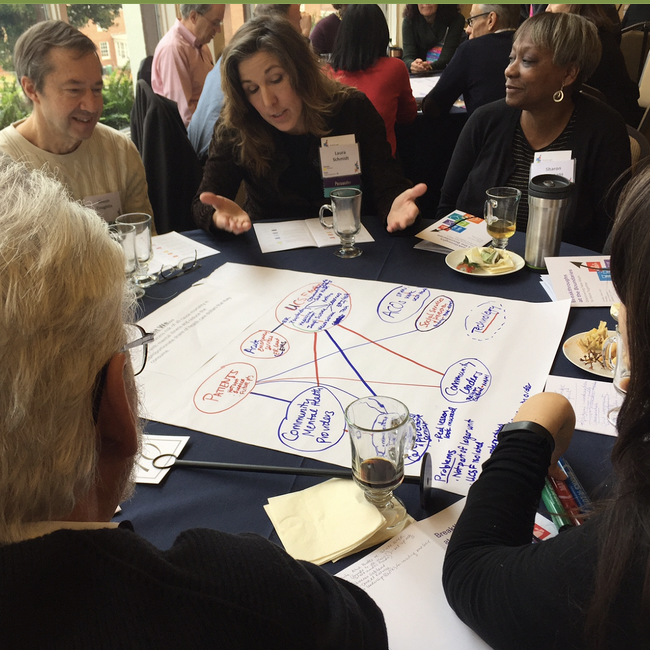Intervention resources like the Relational Facilitation Guide and Relational Mapping can be used for consulting, coaching and teaching. RCC members are invited to share their Intervention Resources with other RCC members and with the broader community.
Relational Facilitation Guidebook
 This guidebook offers an introduction to relational facilitation, a four-step implementation strategy that combines the theory of relational coordination with the implementation strategy of facilitation to assess and improve relationships and communication within and between teams to support program outcomes. This guidebook is for anyone who wants to improve work processes. Relational facilitation has been shown to support strategic priorities by increasing patient satisfaction with care, employee productivity, and reducing staff burnout. This guidebook has been developed by Brigid Connelly, Heather Gilmartin, Anne Hale, Rachael Kenney, Brianne Morgan and Heidi Sjoberg at the Denver/Seattle Center of Innovation for the Veterans Health Administration.
This guidebook offers an introduction to relational facilitation, a four-step implementation strategy that combines the theory of relational coordination with the implementation strategy of facilitation to assess and improve relationships and communication within and between teams to support program outcomes. This guidebook is for anyone who wants to improve work processes. Relational facilitation has been shown to support strategic priorities by increasing patient satisfaction with care, employee productivity, and reducing staff burnout. This guidebook has been developed by Brigid Connelly, Heather Gilmartin, Anne Hale, Rachael Kenney, Brianne Morgan and Heidi Sjoberg at the Denver/Seattle Center of Innovation for the Veterans Health Administration.
Relational Mapping
Relational mapping is a tool for participants to learn how to assess interdependence and the current state of teamwork among roles, informed by Relational Coordination Theory and the Relational Model of Organizational Change.
“Interventions informed by relational coordination improve participants’ capacity to self-manage their interdependence: to understand their common goal, to see how their individual work fits into the larger work process, and to carry out their work with mindfulness of how their actions affect others. Teams [whether a group of individuals or a network of organizations spread out around the globe] achieve their highest level of performance when they have a discipline of ongoing group reflection on how they are working together, supported by adequate communication and a systems view of their work” (Tony Suchman in Gittell, 2016).
Relational mapping helps participants to reflect on the state of teamwork across all the roles in a work process, including those that tend to be overlooked because of their relatively low status; roles that work in different locations or for different organizations; and roles that exist outside work organizations, such as clients and their families. It often surfaces sensitive and unresolved team dynamics and can also serve as an impetus for change through the generation of new ideas, insights and strategies for addressing complex challenges.
You can treat relational mapping as a hypothesis about how RC is working, then use the RC Survey to test your hypothesis and find out how RC is really working.
To use Relational Mapping as part of a change process, see the RC Playbook.
How Relational Mapping Works
Students take on the roles of various stakeholders in a live case they are experiencing, or based on a teaching case they have been assigned. In a team consulting project, students can lead representatives from each stakeholder group through a relational mapping process. They assess the strength of relational coordination within and between roles. Ties are assessed as weak (shown in red), moderate (shown in blue) or strong (shown in green).
- Invite participants to form groups of 3 to 6, around tables or in breakout groups online.
- If working around tables, use this worksheet, flip chart paper, and red, blue, green markers.
- If working online, use zoom, this worksheet, and this template.
The Relational Model of Organizational Change

